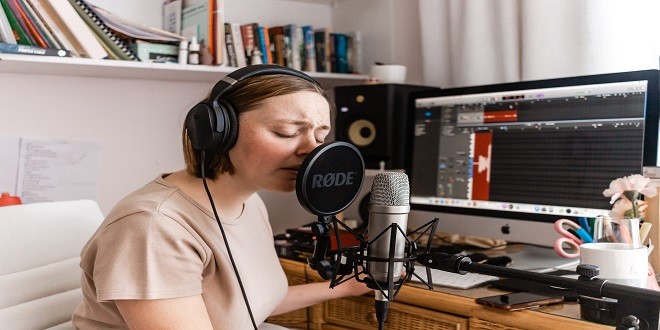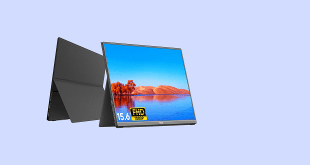At our blog Naasongs.in we’ve reviewed and published so many music and remixes as of today. And most of our readers including you are professionals and remixers where a good quality mixing and mastering headphones is essential to bring your music production journey.
In this definitive guide you’ll learn everything in mixing and mastering headphones.
So, let’s get started.
What is Mixing and Mastering?
Mixing and mastering are the final stages of music production, where the tracks are balanced, polished, and prepared for distribution. While many professionals use studio monitors to perform these tasks, there are times when headphones are a better option.
What is Mixing and Mastering Headphones?
Any headphones specially designed for mixing and mastering purposes called mixing mastering headphones. This guide will provide tips and techniques for mixing and mastering with headphones, including selecting the right headphones, optimizing the listening environment, and using EQ, compression, and other effects to achieve a professional-sounding mix.
How to Choose the Right Mixing and Mastering Headphones?
Choosing the right headphones is crucial for accurate mixing and mastering. There are many factors to consider when selecting headphones, including frequency response, sensitivity, and comfort.
Here are some key features you need to look when you are choosing a headphone for music production.
Headphones Type
A perfect headphones type and size is important to choose from. The over-ear headphones wired connection headphones are great for mixing and mastering studios. And for live performance an on-ear is recommended.
Frequency response
Frequency response is the range of frequencies that headphones can accurately reproduce. Ideally, headphones should have a flat frequency response, meaning that they reproduce all frequencies equally. However, some headphones are designed with a bass boost or other frequency response curve that can be useful for certain genres.
Sensitivity
Sensitivity is the measure of how efficiently headphones convert an electrical signal into sound. A higher sensitivity means that headphones can produce louder volumes without distortion, which is especially important when mastering.
Comfort
Comfort is also an important consideration since you’ll be wearing headphones for long periods. Look for headphones with padded ear cups and an adjustable headband that fits your head comfortably.
And there are many things to consider when you choose any headphones.
Optimizing the Listening Environment
To ensure accurate mixing and mastering with headphones, it’s important to optimize the listening environment. This means reducing external noise and minimizing reflections and other acoustic issues that can affect the sound.
Start by finding a quiet place to work where you won’t be disturbed. If you can’t eliminate external noise, consider using noise-cancelling headphones or a white noise generator to mask the sound. You should also take steps to minimize acoustic issues in your listening environment.
For example, you can use acoustic foam or other materials to dampen reflections and reduce unwanted resonances. Alternatively, you can use a headphone calibration system like Sonarworks Reference 4 to correct for any frequency response irregularities in your headphones.
Using EQ to Balance the Mix
EQ is a powerful tool for balancing the mix and ensuring that each track is heard clearly. When using EQ with headphones, it’s important to be aware of the limitations of headphone frequency response. Start by listening to the mix with your headphones and identifying any frequency imbalances or other issues.
Use a parametric equalizer to boost or cut specific frequencies as needed to achieve a more balanced sound. Remember that EQ changes are cumulative, so it’s important to make small adjustments and listen to the changes in context with the rest of the mix. Also, be aware that EQ changes made on headphones may sound different on other playback systems, so it’s important to test your mix on multiple devices.
Using Compression and Other Effects
In addition to EQ, there are a variety of other effects that can be used to polish the mix and prepare it for mastering. Compression is one of the most commonly used effects, and it can be particularly effective when used with headphones. Compression helps to smooth out the dynamics of the mix, reducing the volume of loud sounds and increasing the volume of quiet sounds.
This can help to achieve a more consistent overall level and make the mix sound more polished. Other effects that can be useful when mixing and mastering with headphones include reverb, delay, and stereo imaging plugins. Reverb and delay can add depth and dimension to the mix, while stereo imaging plugins can help to widen the stereo field and create a more immersive listening experience.
Testing the Mix on Multiple Playback Systems
Once you’ve finished mixing and mastering with headphones, it’s important to test the mix on multiple playback systems to ensure that it sounds good on a variety of devices. This can include listening on studio monitors, car stereos, headphones, and other devices. When testing the mix, pay attention to any issues that may have been masked by the limitations of using headphones, such as an overly compressed sound or a lack of bass.
Adjust the mix as needed to ensure that it sounds good on all devices. It’s also a good idea to have someone else listen to the mix and provide feedback. This can help to identify any issues that you may have missed and ensure that the mix is ready for distribution.
Conclusion
Mixing and mastering with headphones can be a useful tool for producers and engineers who don’t have access to a professional studio or who need to work in a quiet environment.
By selecting the right headphones, optimizing the listening environment, and using EQ, compression, and other effects effectively, it’s possible to achieve a professional-sounding mix that sounds great on a variety of playback systems.
Remember to test your mix on multiple devices and get feedback from others to ensure that it’s ready for distribution. With practice and attention to detail, you can master the art of mixing and mastering with headphones and achieve great results. Thanks!
 Naa Songs
Naa Songs




